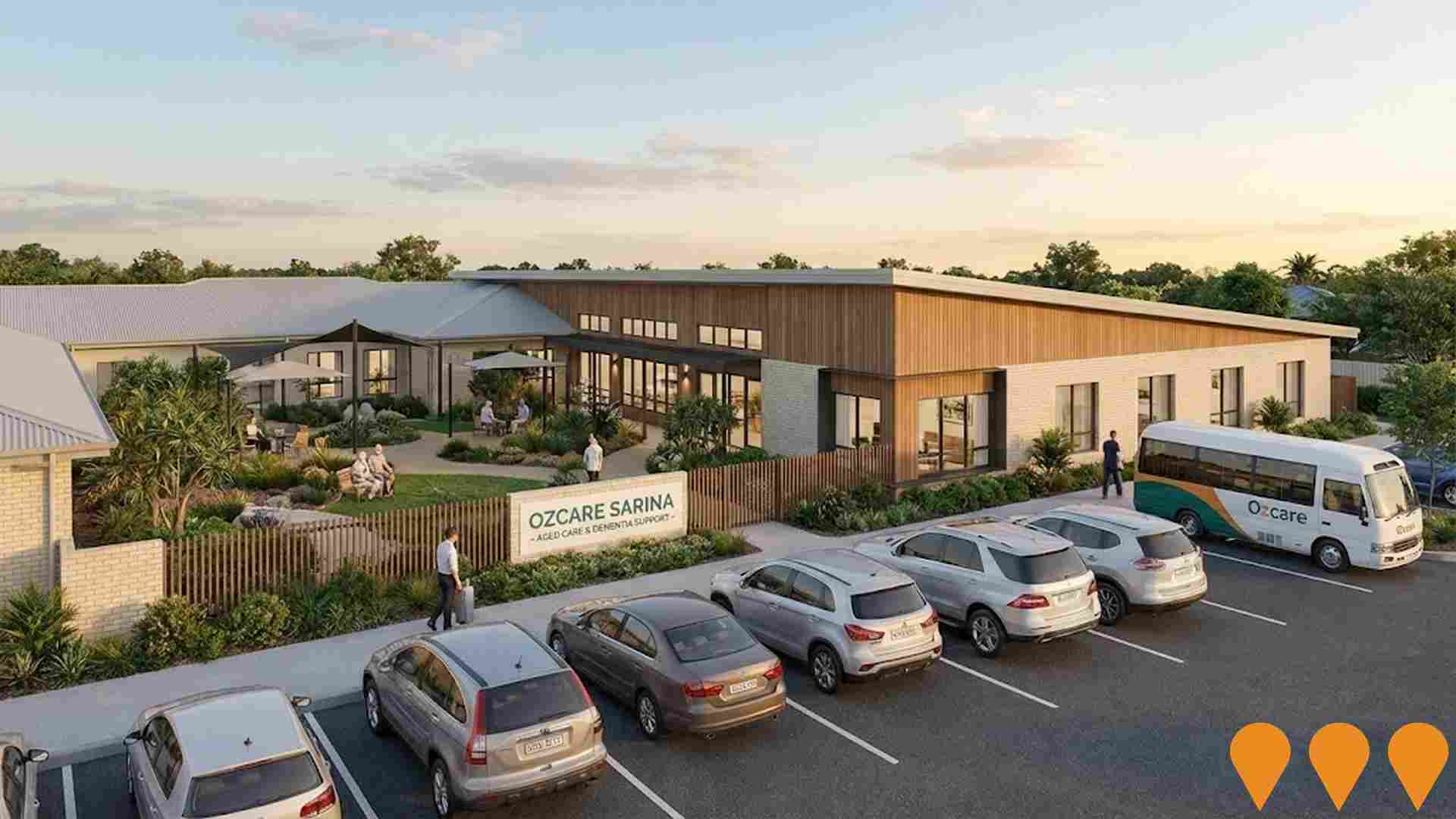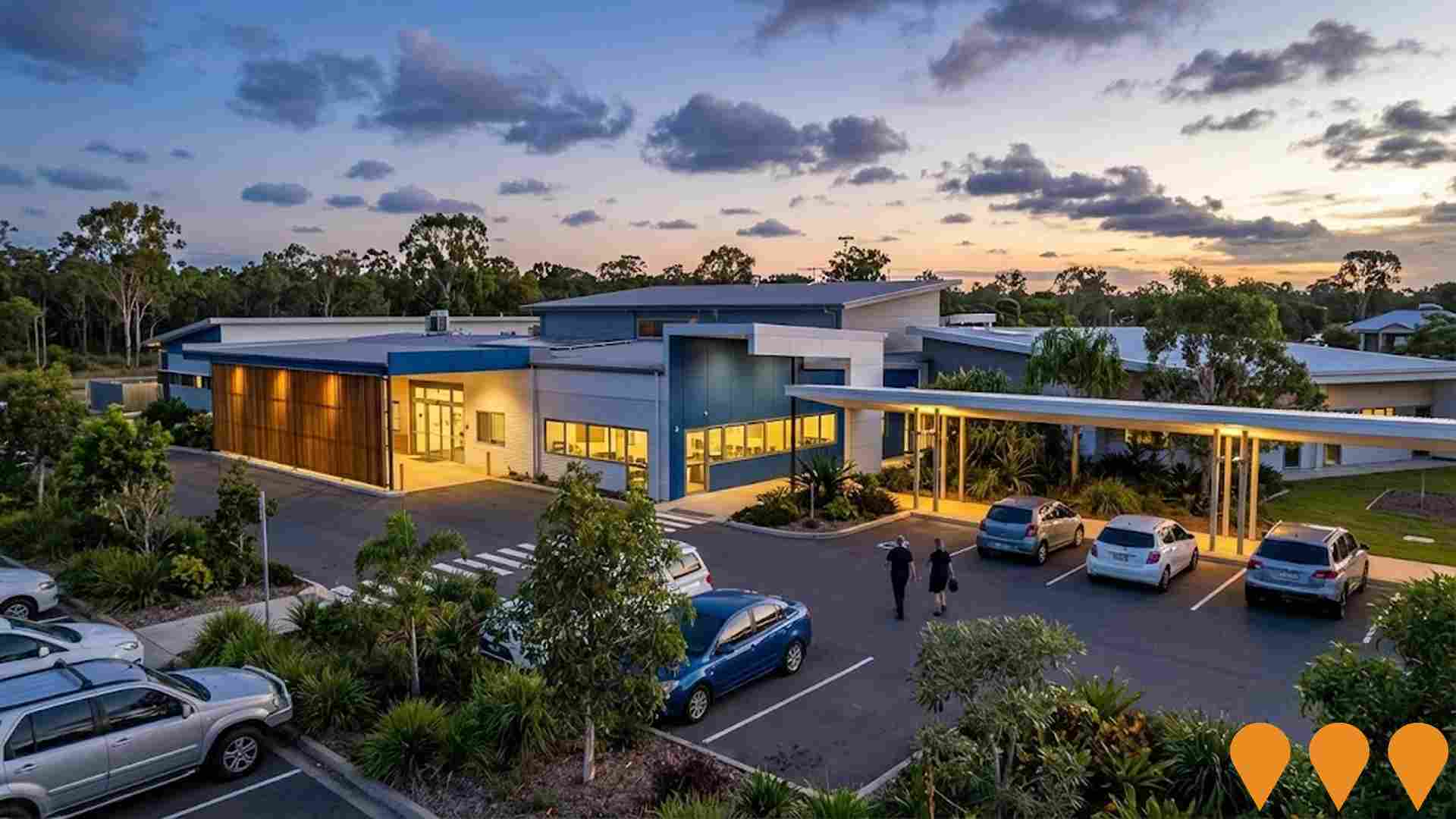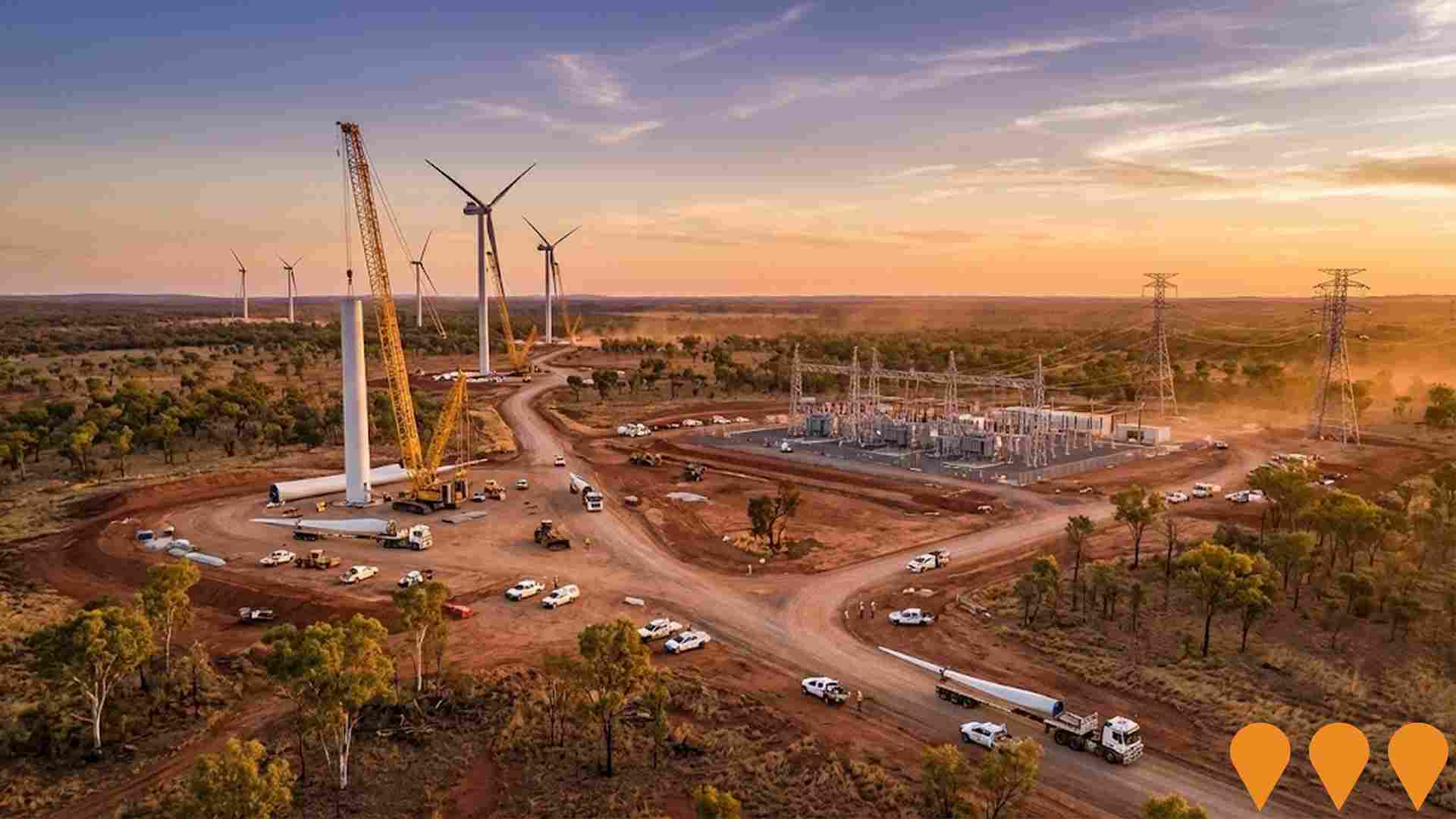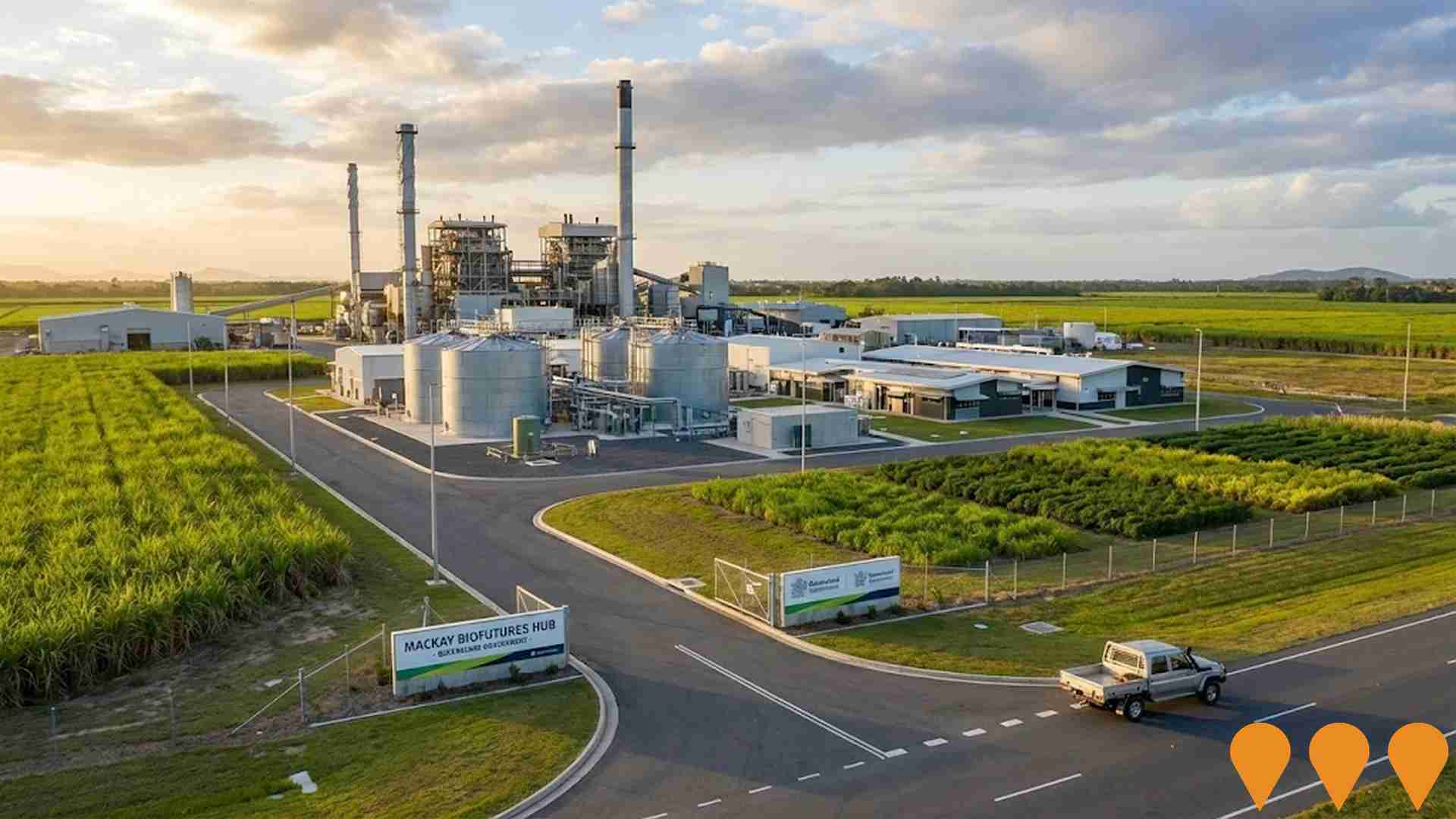Chart Color Schemes
est. as @ -- *
ABS ERP | -- people | --
2021 Census | -- people
Sales Activity
Curious about local property values? Filter the chart to assess the volume and appreciation (including resales) trends and regional comparisons, or scroll to the map below view this information at an individual property level.
Find a Recent Sale
Sales Detail
Population
Sarina is positioned among the lower quartile of areas assessed nationally for population growth based on AreaSearch's assessment of recent, and medium term trends
Sarina's population, as of August 2025, is approximately 12,422. This figure represents an increase of 600 people since the 2021 Census, which recorded a population of 11,822. The estimated resident population in June 2024 was 12,409, with an additional 92 validated new addresses since the Census date contributing to this growth. This results in a population density ratio of 8.6 persons per square kilometer. Sarina's population growth rate of 5.1% since the census is within 1.5 percentage points of the SA3 area's growth rate of 6.6%. Interstate migration contributed approximately 54.1% of overall population gains during recent periods, with all drivers including natural growth and overseas migration being positive factors.
AreaSearch uses ABS/Geoscience Australia projections for each SA2 area released in 2024 with a base year of 2022. For areas not covered by this data and years post-2032, Queensland State Government's SA2 area projections released in 2023 based on 2021 data are adopted. However, these state projections do not provide age category splits, so AreaSearch applies proportional growth weightings in line with the ABS Greater Capital Region projections for each age cohort, released in 2023 using a base year of 2022. Based on projected demographic shifts, Sarina is expected to increase by just below the median of Australian non-metropolitan areas, reaching an additional 1,551 persons by 2041, with a total increase of 12.4% over the 17-year period.
Frequently Asked Questions - Population
Development
Recent residential development output has been above average within Sarina when compared nationally
Sarina has recorded approximately 32 residential properties granted approval per year over the past five financial years, totalling 164 homes. In FY-26 so far, 9 approvals have been recorded. On average, 4.8 people moved to the area annually for each dwelling built between FY-21 and FY-25. This indicates significant demand outpacing supply, which typically influences prices upwards and intensifies competition among buyers.
The average construction value of new homes is $475,000, aligning with regional trends. In this financial year, $39.4 million in commercial approvals have been registered, reflecting high local commercial activity. Compared to the Rest of Qld, Sarina records about three-quarters the building activity per person and ranks among the 35th percentile nationally, leading to relatively limited buyer choice and interest in existing dwellings. This is below average nationally, suggesting possible planning constraints.
Recent development has consisted entirely of detached dwellings, maintaining the area's low density nature and attracting space-seeking buyers. With an estimated 466 people per dwelling approval, Sarina's development environment is quiet and low activity. Population forecasts indicate a gain of 1,538 residents by 2041. At current development rates, housing supply may struggle to keep pace with population growth, potentially intensifying buyer competition and supporting price increases.
Frequently Asked Questions - Development
Infrastructure
Sarina has moderate levels of nearby infrastructure activity, ranking in the 41stth percentile nationally
Changes in local infrastructure significantly affect an area's performance. AreaSearch has identified 12 projects that could impact this region. Notable ones are Ozcare Sarina Aged Care Expansion, Anzac Street Sarina Railway Crossing, Central Village Sarina, and Sarina Northern Drainage Project. The following list details those expected to be most relevant.
Professional plan users can use the search below to filter and access additional projects.
INFRASTRUCTURE SEARCH
 Denotes AI-based impression for illustrative purposes only, not to be taken as definitive under any circumstances. Please follow links and conduct other investigations from the project's source for actual imagery. Developers and project owners wishing us to use original imagery please Contact Us and we will do so.
Denotes AI-based impression for illustrative purposes only, not to be taken as definitive under any circumstances. Please follow links and conduct other investigations from the project's source for actual imagery. Developers and project owners wishing us to use original imagery please Contact Us and we will do so.
Frequently Asked Questions - Infrastructure
Ozcare Sarina Aged Care Expansion
A $23.5 million extension to the existing aged care facility, adding 20 new beds including a special care unit for dementia, 8 staff accommodation units, internal upgrades to the administration building, and an expansion of the car park by 8 spaces.

Sarina Hospital Redevelopment
Queensland's first rural digital hospital, a $31.5 million purpose-built facility on Brewers Road. Features 19 beds (up from 16), expanded emergency department, larger consultation rooms, purpose-built rehabilitation facility with expanded gym space, single ensuite rooms, and new staff accommodation. Serves Sarina and surrounding communities with improved healthcare delivery. Completed 2024.

Lotus Creek Wind Farm
285MW wind farm with 46 Vestas V162-6.2 MW wind turbines owned by CS Energy. First 100% publicly owned wind farm under Queensland Energy and Jobs Plan. Generating enough clean energy to power approximately 150,000-170,000 Queensland homes annually. Construction underway with expected operations in 2027. Will create approximately 400 jobs during construction and 10-15 ongoing operational roles. Includes new substation connecting to existing powerlines.

Mackay State Development Area
907 hectares designated for renewable energy and biofutures industries. Supports regional economic diversification and sustainable aviation fuel production. Leverages Mackay's agricultural strengths for net-zero transition industries. Declared February 2024 with development scheme approved September 2024. The SDA incorporates two distinct areas: Racecourse Mill area (137 hectares) approximately 5km west of Mackay CBD, and Rosella area (770 hectares) located 10km south of Mackay CBD. Designed to become Queensland's home for emerging biocommodity industry.

Isaac Renewable Energy Zone (QREZ)
Proposed Queensland Renewable Energy Zone focused on the Isaac region (Central Queensland). Identified in Queensland's REZ Roadmap as a potential REZ (Phase 2) to coordinate large-scale wind, solar and storage projects and connect them efficiently to Powerlink's transmission network. Early activities include community engagement, developer readiness and network planning led by Powerlink as the REZ Delivery Body.

Pacific Parks Estate
Master planned residential community on 25.26 hectares with approved Material Change of Use and Reconfiguration for 233 lots. Stage 4 comprises 88 lots with current Operational Works Approval. First three stages sold successfully.

Central Village Sarina
Mixed-use medium/high density residential development comprising approximately 168 apartments on 17,000 sqm site. Emerging Communities Zoning allows for commercial and hotel development. Located 800m from Sarina town centre.

Sarina Water Main Upgrade Detailed Design
Detailed design for upgrading a water main in Sarina to accommodate extra residential growth in the area, funded under the Queensland Government's Residential Activation Fund. The funding amount is $312,000 for the detailed design, which is intended to support the construction of new residential developments. Other Sarina water main renewal works have been completed in other areas of Sarina by Mackay Regional Council, but this project specifically relates to the design for growth-enabling infrastructure.

Employment
Employment conditions in Sarina demonstrate strong performance, ranking among the top 35% of areas assessed nationally
Sarina has a balanced workforce spanning white and blue collar employment. Manufacturing and industrial sectors are strongly represented with an unemployment rate of 2.6%.
There was estimated employment growth of 1.7% over the past year. As of June 2025, there are 6,232 residents in work while the unemployment rate is 1.3% below Rest of Qld's rate of 3.9%, and workforce participation is broadly similar to Rest of Qld's 59.1%. The key industries of employment among residents are mining, transport, postal & warehousing, and health care & social assistance. Mining shows notable concentration with employment levels at 4.4 times the regional average.
Conversely, health care & social assistance shows lower representation at 9.6% versus the regional average of 16.1%. Employment opportunities locally appear limited as indicated by Census working population vs resident population comparison. Between June 2024 and June 2025, employment levels increased by 1.7%, labour force decreased by 0.3%, causing unemployment rate to fall by 1.9 percentage points. Rest of Qld recorded employment growth of 1.8%, labour force growth of 2.0%, with unemployment rising 0.2 percentage points during the same period. Jobs and Skills Australia's national employment forecasts from May 2025 suggest national employment expansion by 6.6% over five years and 13.7% over ten years, but growth rates differ significantly between industry sectors. Applying these projections to Sarina's employment mix suggests local growth of approximately 5.0%% over five years and 11.4% over ten years.
Frequently Asked Questions - Employment
Income
Income analysis reveals strong economic positioning, with the area outperforming 60% of locations assessed nationally by AreaSearch
According to AreaSearch's aggregation of the latest postcode level ATO data released for financial year ended June 2022, Sarina had a median income among taxpayers of $58,250 with the average level standing at $73,106. This is higher than national levels and compares to $50,780 and $64,844 across Rest of Qld respectively. Based on Wage Price Index growth of 13.99% since financial year ended June 2022, current estimates would be approximately $66,399 (median) and $83,334 (average) as of September 2025. According to the Census conducted in August 2021, household, family and personal incomes all rank modestly in Sarina, between the 42nd and 52nd percentiles. Distribution data shows that 31.5% of the population (3,912 individuals) fall within the $1,500 - 2,999 income range, reflecting patterns seen at regional levels where 31.7% similarly occupy this range. After housing costs, residents retain 87.2% of their income.
Frequently Asked Questions - Income
Housing
Sarina is characterized by a predominantly suburban housing profile, with above-average rates of outright home ownership
In Sarina, as per the latest Census evaluation, 93.5% of dwellings were houses, with the remaining 6.5% comprising semi-detached homes, apartments, and other dwelling types. This differs from Non-Metro Qld's distribution of 85.1% houses and 14.9% other dwellings. Home ownership in Sarina stood at 37.4%, with mortgaged dwellings accounting for 39.9% and rented properties making up 22.7%. The median monthly mortgage repayment in the area was $1,733, aligning with Non-Metro Qld's average. The median weekly rent figure was recorded at $300, compared to Non-Metro Qld's averages of $1,733 and $340 respectively. Nationally, Sarina's mortgage repayments were lower than the Australian average of $1,863, while rents were substantially below the national figure of $375.
Frequently Asked Questions - Housing
Household Composition
Sarina has a typical household mix, with a fairly typical median household size
Family households constitute 76.3% of all households, including 31.4% couples with children, 34.5% couples without children, and 9.3% single parent families. Non-family households comprise the remaining 23.7%, with lone person households at 21.3% and group households making up 2.3%. The median household size is 2.6 people, which aligns with the average for the Rest of Qld.
Frequently Asked Questions - Households
Local Schools & Education
Sarina faces educational challenges, with performance metrics placing it in the bottom quartile of areas assessed nationally
The area's university qualification rate stands at 9.7%, significantly lower than the Australian average of 30.4%. This presents both a challenge and an opportunity for targeted educational initiatives. Bachelor degrees are most prevalent at 7.3%, followed by postgraduate qualifications (1.2%) and graduate diplomas (1.2%). Trade and technical skills are prominent, with 46.0% of residents aged 15+ holding vocational credentials - advanced diplomas (7.4%) and certificates (38.6%).
Educational participation is high, with 30.1% of residents currently enrolled in formal education. This includes 12.7% in primary education, 10.0% in secondary education, and 2.4% pursuing tertiary education. Six schools operate within Sarina, educating approximately 1,906 students. The area has five primary schools and one secondary school serving distinct age groups.
Frequently Asked Questions - Education
Schools Detail
Nearby Services & Amenities
Transport
Transport servicing is very low compared to other areas nationally based on assessment of service frequency, route connectivity and accessibility
Sarina has 12 active public transport stops. These are bus stops serviced by one route, offering 50 weekly passenger trips in total. Transport accessibility is limited, with residents typically living 5527 meters from the nearest stop.
The service frequency averages 7 trips per day across all routes, which equates to approximately 4 weekly trips per individual stop.
Frequently Asked Questions - Transport
Transport Stops Detail
Health
Health performance in Sarina is lower than average with common health conditions somewhat prevalent across both younger and older age cohorts
Sarina faces significant health challenges, with common health conditions prevalent across both younger and older age cohorts.
The rate of private health cover is very high at approximately 56% of the total population (~6,956 people). The most common medical conditions are arthritis and asthma, impacting 9.1 and 7.6% of residents respectively. 67.2% of residents declared themselves completely clear of medical ailments, compared to 69.7% across Rest of Qld. The area has 19.4% of residents aged 65 and over (2,412 people), which is higher than the 16.2% in Rest of Qld. Health outcomes among seniors present some challenges, broadly in line with the general population's health profile.
Frequently Asked Questions - Health
Cultural Diversity
The latest Census data sees Sarina placing among the least culturally diverse areas in the country when compared across a range of language and cultural background related metrics
Sarina's cultural diversity was assessed as below average, with 86.8% of its population being citizens, 92.1% born in Australia, and 97.2% speaking English only at home. Christianity was the predominant religion, practiced by 57.0% of Sarina's population, compared to 56.8% across Rest of Qld. The top three ancestry groups were Australian (33.1%), English (29.9%), and Scottish (7.7%).
Notably, Maltese were overrepresented at 1.6%, compared to the regional average of 2.4%. Similarly, German representation was higher at 4.9% than the regional average of 4.7%, and Australian Aboriginal representation was also higher at 4.4%, compared to the regional average of 3.6%.
Frequently Asked Questions - Diversity
Age
Sarina hosts an older demographic, ranking in the top quartile nationwide
The median age in Sarina is close to Rest of Qld's average of 41 years at 42 years, both figures being well above Australia's median age of 38 years. Comparing Sarina with the Rest of Qld average, the 65-74 age cohort is notably over-represented locally at 12.4%, while the 25-34 year-olds are under-represented at 11.2%. Between the 2021 Census and present, the 15 to 24 age group has grown from 10.7% to 11.8% of Sarina's population. Conversely, the 55 to 64 cohort has declined from 15.1% to 13.7%, and the 5 to 14 age group has dropped from 13.2% to 12.1%. Population forecasts for 2041 indicate significant demographic changes in Sarina, with the 25-34 age cohort projected to expand by 463 people (33%) from 1,392 to 1,856. Meanwhile, the 55-64 and 15-24 cohorts are expected to experience population declines.


